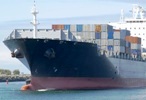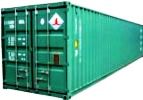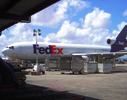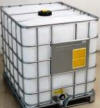| Mubychem Group, established in 1976, is the pioneer manufacturer of Zinc Chloride Solution, Pharmaceutical, Fragrance & Flavor chemicals in India. Mubychem Group has several manufacturing facilities spread across Gujarat and Mumbai India and world wide contacts and toll manufacturers. We are exporting globally to countries like USA, Canada, Europe, UAE, South Africa, Tanzania, Kenya, Egypt, Nigeria, Uganda, Turkey, Mexico, Brazil, Chile, Argentina, Dubai etc. |
The participating units have one or more accreditations like FDA - GMP approval; ISO-9001 Certified; "REACH"registered; ISO-22000; Kosher Certified;Halal Certified; HACCP. We offer Pure & IP BP USP FCC Food Grade ACS AR Analytical Reagent Grades of Chemicals | |







Zinc Chloride Solution Manufacturers, MSDS Sheet
Zinc Chloride Anhydrous & Solution Comercial Specifications
Zinc Chloride Anhydrous Solution BP USP IP ACS AR Analytical Reagent Grade Manufacturers
Zinc Chloride
Anhydrous Solution Brine Battery Grade
Also IP BP Ph. Eur. USP ACS AR LR FCC Food Grades

Zinc Chloride Solution, MSDS Sheet, Material Safety Data Sheet
1. Product Identification
Synonyms: Zinc Chloride Lye
CAS No.: 7646-85-7
Molecular Weight: 136.30
Chemical Formula: ZnCl2 with water
2. Composition/Information on Ingredients
Ingredient: Zinc Chloride
CAS No.: 7646-85-7
Percent: 30-70% Zinc Chloride in 67-27% water
Hazardous: Yes
3. Hazards Identification
Emergency Overview
DANGER! CORROSIVE. CAUSES BURNS TO ANY AREA OF CONTACT. HARMFUL IF SWALLOWED OR INHALED. AFFECTS THE CARDIOVASCULAR SYSTEM. Hazardous as per OSHA & WHIMS.
Potential Health Effects
Inhalation: Zinc Chloride Solution is extremely destructive to tissues of the mucous membranes and upper respiratory tract. Symptoms may include burning sensation, coughing, wheezing, laryngitis, shortness of breath, headache, nausea and vomiting.
Ingestion: Zinc Chloride is toxic. May cause irritation or corrosion to the gastrointestinal tract with abdominal pain, nausea, and vomiting. Zinc chloride may cause delayed death occurring from strictures of the esophagus and pylorus.
Skin Contact: Zinc Chloride may cause severe irritation, skin burns and ulcerations. Zinc Chloride solutions are corrosive. Symptoms include redness and pain.
Eye Contact: Zinc chloride may cause redness, pain, and blurred vision. Splashes from solutions may cause eye damage.
Chronic Exposure: Repeated skin contact of Zinc chloride can cause varying degrees of problems ranging from dermatitis to ulcerations. Repeated Inhalation can cause occupational asthma.
Aggravation of Pre-existing Conditions: Dermatitis, cardiac and respiratory disorders.
4. First Aid Measures
Inhalation: Remove to fresh air. If not breathing, give artificial respiration. If breathing is difficult, give oxygen. Get medical attention immediately.
Ingestion: If swallowed, DO NOT INDUCE VOMITING. Give large quantities of water. Never give anything by mouth to an unconscious person. Get medical attention immediately.
Skin Contact: Immediately flush skin with plenty of water for at least 15 minutes while removing contaminated clothing and shoes. Get medical attention immediately. Wash clothing before reuse. Thoroughly clean shoes before reuse.
Eye Contact: Immediately flush eyes with plenty of water for at least 15 minutes, lifting lower and upper eyelids occasionally. Get medical attention immediately.
5. Fire Fighting Measures
Fire: Zinc chloride is not considered to be a fire hazard.
Explosion: Zinc Chloride is not considered to be an explosion hazard.
Fire Extinguishing Media: Use any means suitable for extinguishing surrounding fire.
Special Information: Use protective clothing and breathing equipment appropriate for the surrounding fire over.
NFPA: Health-3 / Fire-0 / Reactivity-0
HMIS: Health-3 / Fire-0 / Reactivity-0
6. Accidental Release Measures
Ventilate area of leak or spill of Zinc chloride. Keep unnecessary and unprotected people away from area of spill. Wear appropriate personal protective equipment as specified in Section 8. Spills: Pick up and place in a suitable container for reclamation or disposal, using a method that does not generate dust. Avoid release to the environment. US Regulations (CERCLA) require reporting spills and releases to soil, water and air in excess of reportable quantities. The toll free number for the US Coast Guard National Response Center is (800) 424-8802.
7. Handling and Storage
Keep in a well closed container stored under cold to warm conditions, 2 to 40 C, (36 to 104F). Protect it against physical damage. Containers may be hazardous when empty since they retain product residues (dust, solids); observe all warnings and precautions listed for the product.
8. Exposure Controls/Personal Protection
Airborne Exposure Limits:
OSHA Permissible Exposure Limit (PEL):
1 mg/m3 (TWA) 8H, as fume.
ACGIH Threshold Limit Value (TLV):
1 mg/m3 (TWA); 2 mg/m3 (STEL) for fume
Ventilation System: A system of local and/or general exhaust is recommended to keep employee exposures below the Airborne Exposure Limits. Local exhaust ventilation is generally preferred because it can control the emissions of the contaminant at its source, preventing dispersion of it into the general work area. Please refer to the ACGIH document, Industrial Ventilation, A Manual of Recommended Practices, most recent edition, for details.
Personal Respirators (NIOSH Approved): If the exposure limit is exceeded, a full face piece respirator with dust/mist filter may be worn up to 50 times the exposure limit or the maximum use concentration specified by the appropriate regulatory agency or respirator supplier, whichever is lowest. For emergencies or instances where the exposure levels are not known, use a full-face piece positive-pressure, air-supplied respirator. WARNING: Air purifying respirators do not protect workers in oxygen-deficient atmospheres.
Skin Protection: Wear impervious protective clothing, including boots, gloves, lab coat, apron or coveralls, as appropriate, to prevent skin contact.
Eye Protection: Use chemical safety goggles and/or full face shield where dusting or splashing of solutions is possible. Maintain eye wash fountain and quick-drench facilities in work area.
9. Physical and Chemical Properties
Appearance: The solution is clear to off-white liquid. Zinc chloride is white crystalline granules.
Odor: It is odorless.
Solubility: Soluble 423 in water
Density: The density depends on water content. Specific gravity of Zinc Chloride is 2.91
pH: 4
% Volatiles by volume @ 21C (70F): 0
Boiling Point: NA
Melting Point: NA
Vapor Density (Air=1): NA.
Vapor Pressure (mm Hg): NA
Evaporation Rate (BuAc=1): NA.
10. Stability and Reactivity
Stability: Zinc chloride solution is stable under ordinary conditions of use and storage.
Hazardous Decomposition Products: When heated to decomposition it emits toxic fumes of chlorine and zinc oxide.
Hazardous Polymerization: Will not occur.
Incompatibilities: Cyanides and sulfides, powdered zinc. When mixed with potassium, a weak explosion will occur on impact.
Conditions to Avoid: Incompatibles.
11. Toxicological Information
Oral rat LD50: 350 mg/kg. Investigated as a tumorigen, mutagen, reproductive effector.
12. Ecological Information
Environmental Fate: No information found.
Environmental Toxicity: Dangerous to the environment. Very toxic to aquatic organisms; may cause long term adverse effects in the aquatic environment.
13. Disposal Considerations
Whatever cannot be saved for recovery or recycling should be managed in an appropriate and approved waste disposal facility. Processing, use or contamination of this product may change the waste management options. State and local disposal regulations may differ from federal disposal regulations. Dispose of container and unused contents in accordance with federal, state and local requirements.
14. Transport Information
DOT
Proper Shipping Name: ZINC CHLORIDE, SOLUTION
Hazard Class: 8
UN/NA: UN1840
Packing Group: III
International (Water, I.M.O.)
Proper Shipping Name: ZINC CHLORIDE, SOLUTION
Hazard Class: 8
UN/NA: UN2331
Packing Group: III
International (Air, I.C.A.O.)
Proper Shipping Name: ZINC CHLORIDE, SOLUTION
Hazard Class: 8
UN/NA: UN2331
Packing Group: III
15. Regulatory Information
OSHA: Hazardous by definition of Hazard Communication Standard (29 CFR 1910.1200).
SARA 302: Zinc chloride (7646-85-7) is Listed.
Section 313: Zinc chloride (7646-85-7) is Listed.
SARA 311/312: Acute: Yes; Chronic: Yes; Fire: No; Pressure: No Reactivity: No (Pure / Solid)
CERCLA Hazardous Substances and corresponding RQs: Listed, 1000 lb final RQ; 454 kg final RQ.
TSCA: CAS# 7646-85-7 is listed on the TSCA inventory.
California Proposition 65: Not listed.
TSCA 8(b) inventory: Zinc chloride
USA State Regulations:
Connecticut hazardous material survey.: Zinc chloride
Illinois toxic substances disclosure to employee act: Zinc chloride
Illinois chemical safety act: Zinc chloride
New York release reporting list: Zinc chloride
Rhode Island RTK hazardous substances: Zinc chloride
Pennsylvania RTK: Zinc chloride
Minnesota: Zinc chloride
Massachusetts RTK: Zinc chloride
Massachusetts spill list: Zinc chloride
New Jersey: Zinc chloride
New Jersey spill list: Zinc chloride
Louisiana spill reporting: Zinc chloride
California Director's List of Hazardous Substances: Zinc chloride
EINECS: 231-592-0 This product is on the European Inventory of Existing Commercial Chemical Substances.
WHMIS (Canada): CLASS D-1B: Material causing immediate and serious toxic effects (TOXIC). CLASS D-2A: Material causing other toxic effects. (VERY TOXIC). CLASS E: Corrosive.
HMIS (U.S.A.):
Health Hazard: 3
Fire Hazard: 0
Reactivity: 0
Personal Protection: J
National Fire Protection Association (USA):
Health: 3
Flammability: 0
Reactivity: 0
Specific hazard:
Protective Equipment: Gloves. Synthetic apron. Vapor and dust respirator. Be sure to use an approved/certified respirator or equivalent. Wear appropriate respirator when ventilation is inadequate. Splash goggles.
Chemical Weapons Convention: No; TSCA 12(b): No; CDTA: No
Australian Hazchem Code: 2X
Poison Schedule: S6
16. Other Information
Disclaimer:
******************************
Our company provides this ZINC CHLORIDE MSDS information sheet contained herein in good faith but makes no representation as to its comprehensiveness or accuracy. This ZINC CHLORIDE MSDS sheet is intended only as a guide to the appropriate precautionary handling of the material by a properly trained person using this product. Individuals receiving the information must exercise their independent judgment in determining its appropriateness for a particular purpose.
******************************
Zinc Chloride manufacturers:
MUBYCHEM GROUP
CHINCHBUNDER, MUMBAI 400009, INDIA
TEL: (OFFICE) 91-22-23774610, 91-22- 23723564. 91-22-23728264
e-mail: anmol@pcmenergy.com

Copyright and Usual Disclaimer is Applicable.
Global or International Zinc Chloride Anhydrous Solution Lye Brine BP IP USP FCC Suppliers, Exporters, Importers, Manufacturers
Calcium Phosphate Tribasic MSDS
If I give you “My Word” Nobody can undo it.
If I sign an “Agreement” my Lawyer will undo it
Perfection is made up of small thing but it is not small.

